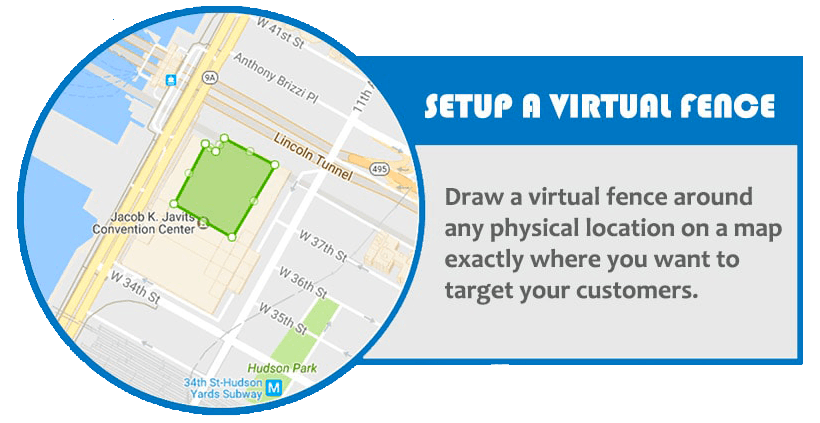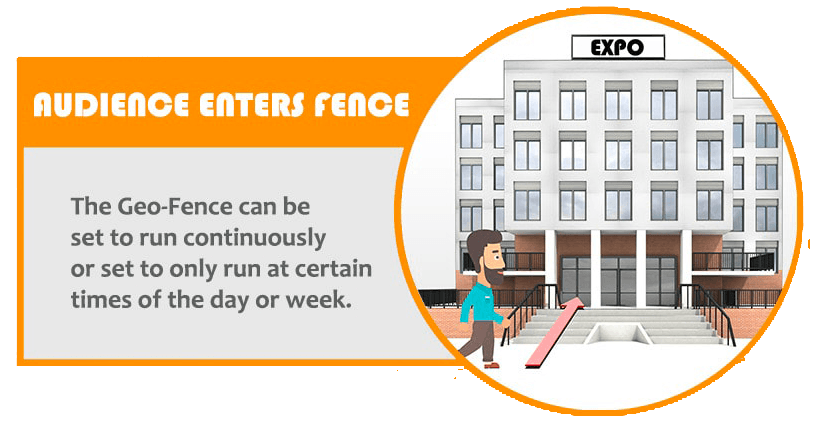Local marketing is a big deal these days, but many of the business owners that hope to attract regional clientele don’t understand the most basic techniques for doing so. Among the top tactics? Geofencing and geotargeting. These terms are sometimes used interchangeably, but they are not one and the same.
In this guide, we’ll explain why geofencing and geotargeting are important — and how they can be called upon to dramatically improve engagement at the local level. First, of course, we need to define both concepts:
- Geofencing. A core component of hyperlocal marketing, this approach involves a virtual barrier that acts online much like a fence would in the real world — but with the intention of determining who, exactly, is targeted by programmatic ads. The location-based fence is created within a map and usually targets locations such as universities, stadiums, shopping malls, auto dealerships, and neighborhoods. Anyone who enters the highlighted area within the fence are targeted by the advertising campaign who might be interested in local deals, busineses, or services. In most cases the user’s IP address is captured so the advertiser can serve ads while the visitor is inside the fence as well as after they leave.
- Geotargeting. Although it’s similar to geofencing in many respects, geotargeting takes the concept of location-based marketing to the next level. Rather than exclusively specifying small defined regions on a map where all individuals will be targeted, this solution defines a variety of other parameters to be taken into account such as demographics, behaviors, and interests, as well as the persons location. This allows for a more precise level of targeting, to ensure that only the people who are most likely to be interested in a particular product or service and also are in a specific geographic area receive marketing messages. This may require additional upfront effort, but it can result in an impressive return on investment.
How Does Geofencing Work?
Step 1 – setup a virtual fence
Step 2 – allow audience to enter targeted area (fence)
Step 3 – capture audience data while in the fence
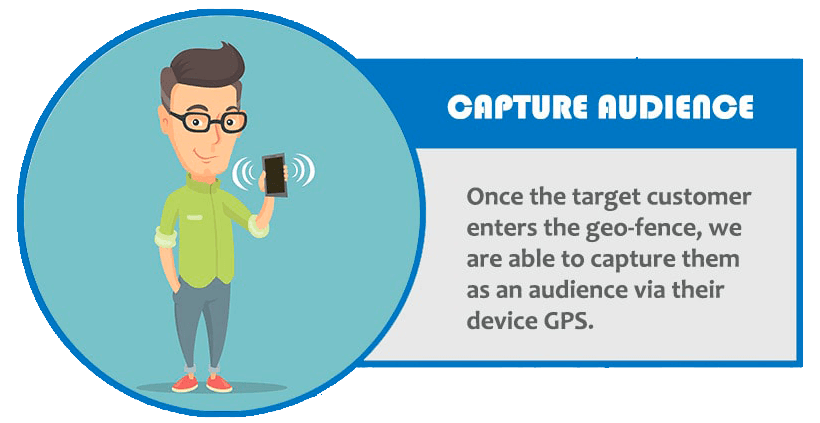
Step 4 – send targeted ads to the audience captured in the fence
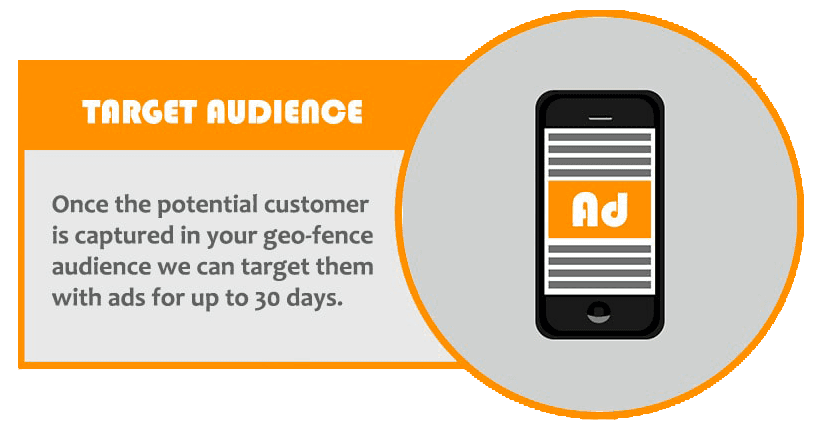
Step 5 – track and measure conversions on ads delivered to the targeted audience
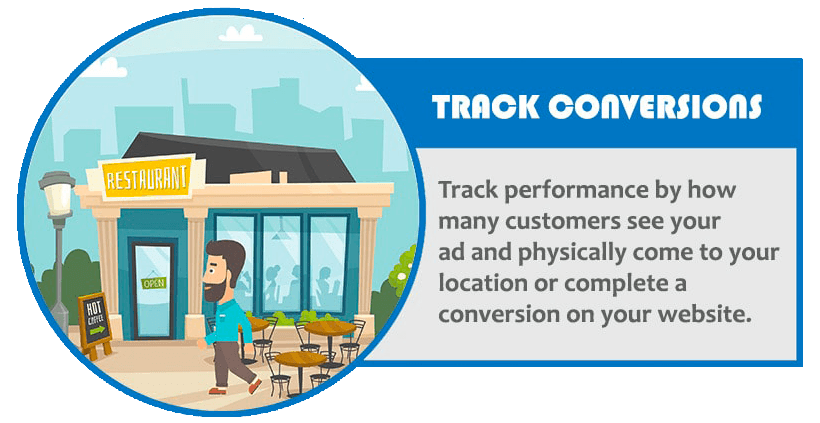
Choosing Between Location-Based Strategies
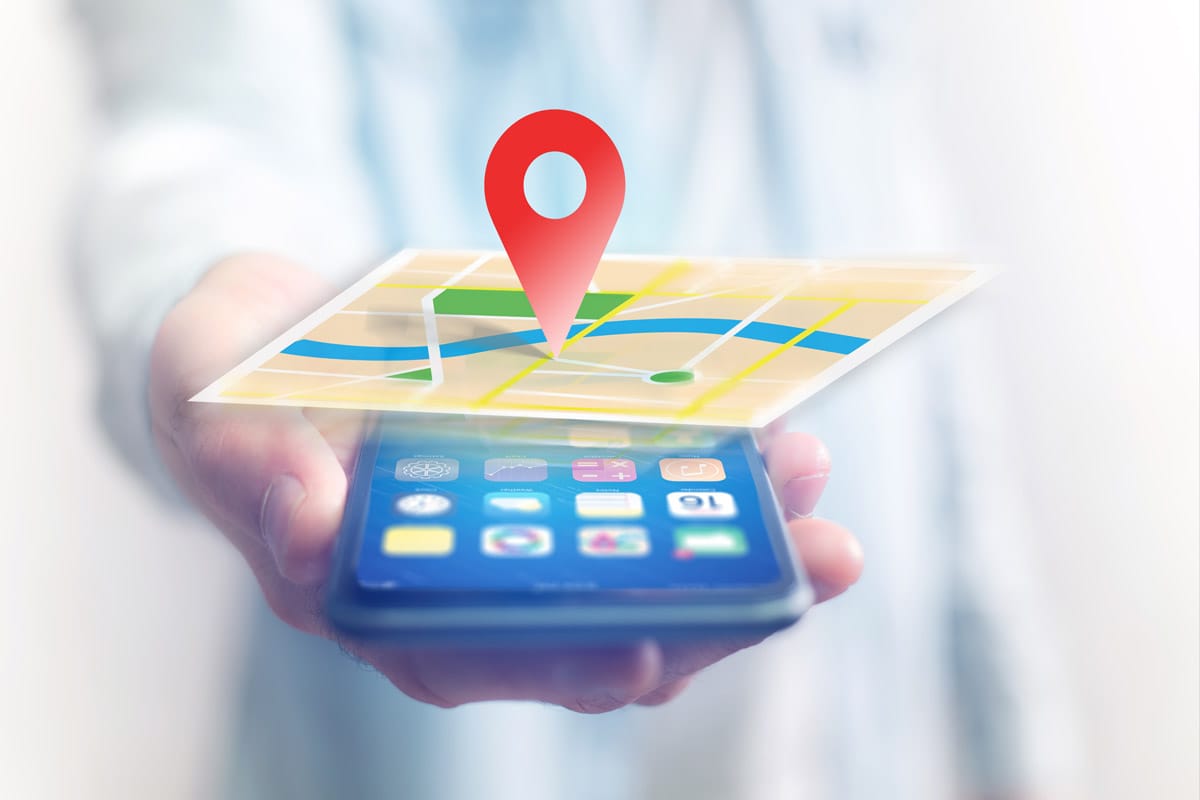
If you hope to attract attention among consumers within a specified area, either geofencing or geotargeting can prove beneficial. Which option is preferable, however, will largely depend on your budget, your location, and the types of customers you hope to attract. Keep the following considerations in mind as you choose the right strategy for your campaign:
Improving Business Awareness
Geofencing may not offer as targeted of an approach to location-based marketing, but in some situations, this broader style is actually preferable. For example, if your primary goal involves raising awareness within your community, it’s in your best interest to get your message to as many people as possible within a specific region — and that’s exactly what you’ll accomplish with geofencing.
For example, if you own a auto dealership located next to a shopping mall, using geofencing you could target anyone who enters the mall with ads for a limited time offer or sale on select vehicles.
Brick and Mortar Marketing
If you’re looking to drive traffic to a brick and mortar location, geofencing may be your best bet. This approach aims to attract as much attention as possible within a particular region, so it could be valuable for getting new customers to your storefront. It’s a particularly prudent solution if you’d like to drive pedestrians to your business; the moment they set foot within a given radius, they’ll receive marketing materials to encourage a quick response.
Geofencing is especially important when you demand accuracy according to your store’s location. Its very structure lends itself to highly precise campaigns, at least as far as location is concerned. With a geofencing campaign, you can feel confident that users will be captured as soon as they enter a very specific area, whereas the location element will be far more general under a geotargeting approach.
Geofencing is also ideal if you target your competitors. Returning to the auto dealership example above, a car dealer could draw a fence around other local dealerships. Most car buyers will visit multiple dealerships when car shopping. Therefore, getting your ads in front of prospective buyers who are visiting other dealerships can give you a significant advantage in the local market.
Getting the Right Customers
If you know your target market — and you are determined to get a very specific type of client or customer to your website or through the door — geotargeting is your preferred option. As mentioned above, this solution allows you to set specific parameters regarding the type of prospects you’d like to attract. As such, your marketing efforts will be targeted based on both location and customer attributes.
For example, a sporting goods store may want to target active young adults who are interested in camping gear within a thirty-mile radius of the store’s location.
Another example, would be an ad campaign that serves ads to business owners in Monterey County who are between the ages of 25 and 55 who have expressed interest investing online.
Geotargeting works best for products and services in which only certain individuals will be interested. Why waste your effort on marketing to a wide variety of people who are unlikely to be interested in your offerings?
Tips for Boosting Your Location-Based Campaign

Regardless of whether you choose geofencing or geotargeting, it’s crucial that you implement your strategy carefully to ensure the best possible ROI. A tailored approach ensures that you use the right solution at the right time. These suggestions should help:
- Avoid an excessively large geofence. Remember, by selecting geofencing over geotargeting, you’re already limiting the possibility to target your audience. An overly large geofence may keep potential customers from visiting simply because it’s inconvenient. Size is also an important consideration for geotargeting, although, if your parameters are specific enough, may be able to expand your geographic reach slightly.
- Build fences where customers already gather. Many businesses fall into the trap of developing geofencing solutions based on the spaces they’d like their customer to occupy — not where they actually spend time. Do your research instead to determine where prospects can be found at key times and how, with a little encouragement, they can be convinced to visit your location.
- Incorporate consumer interests in geotargeting criteria. When defining the ideal prospect to be targeted in each campaign, think about the areas of interest that might convince certain people to take action. Often, businesses only consider broad demographics, forgetting that two people within a certain age group or other major demographic category may behave in a dramatically different manner. For example, a trendy farm-to-table restaurant may benefit more from targeting self-described vegans or foodies as it does from seeking young, urban customers.
- Use the right language. Whether you opt for geotargeting or geofencing, take care to incorporate language that reflects how people in your chosen region actually communicate. Without the right phrasing, your message may seem contrived or unnatural. Regional dialects matter more for geofencing, while geotargeting may need to factor in age, gender, education level, or other considerations.
- Address privacy and security concerns. Some customers and clients are skeptical of both geotargeting and geofencing due to fears about data privacy. When customers regard tracking as excessive or secretive, they will be less likely to respond to your marketing efforts. In general, users prefer transparency. If you keep them in the loop, many will be happy to receive targeted offers designed based on their unique preferences and current location.
There is no one business that can exclusively benefit from geotargeting or geofencing, but it’s important to consider the advantages and challenges associated with each before you implement a location-based marketing solution. Once you’ve examined your options, you can implement a strategy that allows you to reach the right customers or clients while making the most of your current resources.
Improve Local Marketing With Vinci Digital
Whether you’re interested in implementing a geotargeting campaign or simply want to improve local SEO to get the right visitors to your website, you can count on Vinci Digital for guidance. We offer a variety of marketing services that can be customized to meet your unique needs. Contact us today to learn more about our marketing solutions or to request a quote.
PS: Are you thinking of giving geofencing or geotargeting a try? Or have you already implemented one of these strategies? Feel free to share top takeaways from your experience in the comments section below.


